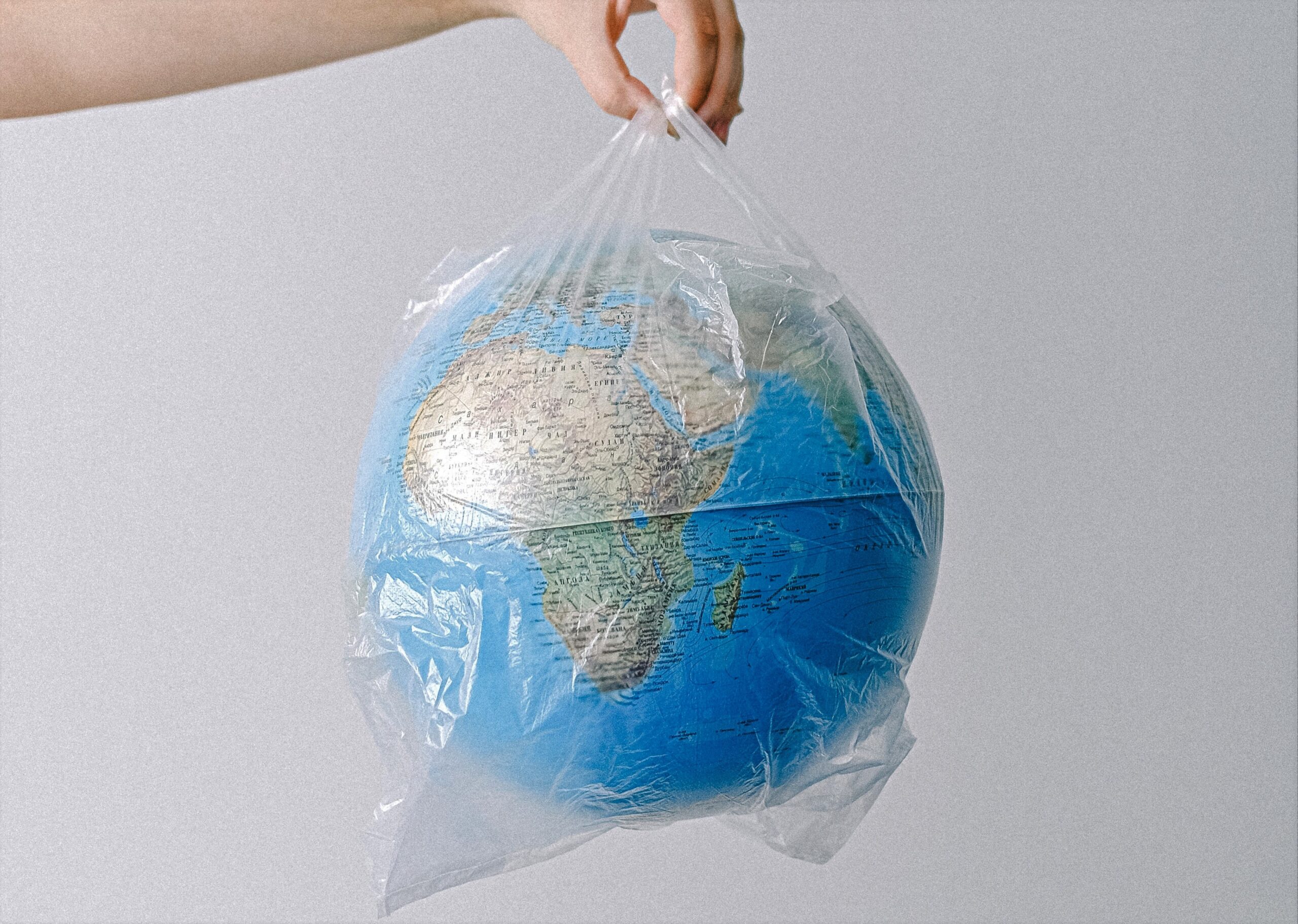
Plastic bags are one of the major sources of pollution in the environment, not only because of their non-biodegradability, which causes them to remain in the environment as litter for centuries, but also because of their significant carbon footprint.
This article will explain what a carbon footprint of plastic bags is, why we need to reduce the carbon footprint of plastic bags, and how we can all contribute to the solution.
Measuring the Carbon Footprint of Plastic Bags
The carbon footprint of a plastic bag refers to the amount of greenhouse gas emissions, primarily carbon dioxide, that are released throughout the lifecycle of the plastic bag, including its production, transportation, use, and disposal.
According to one study, a standard plastic bag weighing an average of 32.5g emits 200 grams of carbon, which is just a bit lower than the amount of carbon emitted from driving 1 km in a gasoline-powered vehicle. This means that 1 kg of carbon dioxide is released into the atmosphere for every 5 standard plastic bags we use. While this may appear insignificant compared to other common factors that generate carbon, like driving or flying, the collective impact of billions of plastic bags used each day globally is tremendous.
In the United States alone, each person uses an average of 1 plastic bag each day. This is equivalent to a total of more than 100 billion plastic bags used in just one year. Based on the statistics described above, this means that the United States emits around 20 trillion kilograms or 20 billion metric tons of carbon into the atmosphere each year just by consuming plastic bags. This is equivalent to approximately 300 million flights from New York to LA (a one-way trip).
Factors Contributing to the Carbon Footprint of a Plastic Bag
The exact carbon footprint of a plastic bag depends on several factors. These include:
1. The type of plastic used and its production.
The plastic type and its production can contribute to carbon emissions in several ways. Here are some examples of different types of plastic used in making plastic bags and how their production can contribute to carbon emissions:
- Polyethylene terephthalate (PET): PET plastics are derived from fossil fuels and require high amounts of energy to produce. PET plastic is the most widely used type of plastic in the world, and it is typically used to make plastic shopping bags, plastic bottles, food containers, and fabrics. Because of its high demand, PET is classified as the highest carbon emitter of all plastic types.
- Polyethylene (PE), Polypropylene (PP), Acrylonitrile butadiene styrene (ABS), and Nylon (PA): These plastics are typically made from petroleum, a fossil fuel that emits greenhouse gases when extracted and refined. These types of plastic are also commonly used in plastic bags, medical equipment, toys, and automotive parts. The production of these plastics requires a significant amount of energy, which contributes to carbon emissions.
- Polyvinyl chloride (PVC): The production of PVC uses chlorine, which is typically derived from the electrolysis of salt. PVC is a thicker type of plastic commonly used to make pipes, electrical cables, street signages, and vinyl floorings. This process requires significant amounts of energy, which emits high amounts of carbon.
- Polystyrene (PS): The production of PS requires the use of styrene, which is typically derived from petroleum. Polystyrene is commonly used to make disposable cutlery, food packaging, and insulation foams for roofings. Like the other plastic types, the production of PS also uses a significant amount of energy.
2. The transportation emissions from shipping materials and distributing the final products.
Plastics are produced and used all over the world. The transportation and delivery of plastic products can contribute to carbon emissions in several ways:
- Fuel consumption for transportation: The transportation of plastic raw materials and products requires the use of vehicles such as trucks, ships, and airplanes, which consume fossil fuels. The carbon emissions from transportation depends on the distance that plastic products travel from manufacturing facilities to distribution warehouses, to stores, and to consumers. Plastic products that are imported or exported may have a higher carbon footprint than those manufactured and consumed locally, since they are transported over longer distances.
- Refrigeration: Some plastic bag products may require refrigeration or cool storage during transportation to avoid deformity and damage. This requires additional energy consumption and can contribute to carbon emissions.
3. The disposal method.
In addition to plastic production and the transportation of products, the disposal of plastic bags is a major contributor to carbon emissions. Because most plastic bags are not biodegradable, they can end up in landfills or the environment for hundreds of years if disposed of incorrectly, releasing methane and other greenhouse gases as they decompose. Each year, the United States alone discards 100 million plastic bags that end up in landfills and the ocean; the damage is equivalent to around 12 million barrels of crude oil released to the environment.
Due to this variety of factors, the carbon footprint of different kinds of plastic bags can vary significantly. For example, the plant-based materials used to create a compostable bag may result in less waste than traditional plastic bags made from fossil fuels, but compostable bags may also require more energy and resources to produce. This makes comparing the actual carbon footprint of various types of plastic bags a challenging issue. Nonetheless, these estimates should be enough for us to take action and contribute to reducing our impacts.
Ways to Reduce the Environmental Impacts of Plastic Bags
Now that we have learned about the carbon footprint of plastic bags, we can better understand the importance of minimizing plastic bags’ impacts on the environment. Here are some ways to reduce the carbon footprint of the plastic bags you use.
1. Reduce plastic bag usage: The easiest and most effective way to reduce the impacts of plastic bags is by reducing their usage. This can be done by using reusable bags made from durable and eco-friendly materials like cotton, jute, or canvas.
- Choose biodegradable bags: Biodegradable plastic bags are made from natural materials like starch or vegetable oil, which can break down into harmless substances like water and carbon dioxide.
- Use recycled plastic bags: Recycled plastic bags are made from post-consumer plastic waste, which reduces the demand for new plastic and the energy required to manufacture it. These still contribute to plastic waste if disposed of incorrectly, so make sure you send them to soft-plastic recyclers for disposal.
- Opt for paper bags: Paper bags are a more eco-friendly alternative to plastic bags. They are biodegradable and can be recycled several times. With this approach, you can significantly reduce your own carbon footprint.
2. Proper disposal: Proper disposal of plastic bags is crucial to reducing their carbon footprint. Make sure to recycle plastic bags in soft-plastic recyclers whenever possible and avoid littering.
3. Support plastic bag bans: Supporting legislation or laws that ban plastic bags can help reduce their usage and encourage the use of eco-friendly alternatives.
Conclusion
Understanding the carbon footprint of plastic bags gives us a better awareness of their impacts on the environment. Taking steps to reduce their carbon footprint can benefit both humanity and our planet’s health. Strategies like reducing the use of plastic bags, replacing them with sustainable alternatives, supporting legal restrictions, recycling or upcycling plastic bags, and raising awareness among consumers can all contribute to reducing their environmental impact. By taking these steps collectively, we can reduce the environmental impacts of plastic bags and build a more sustainable future.
